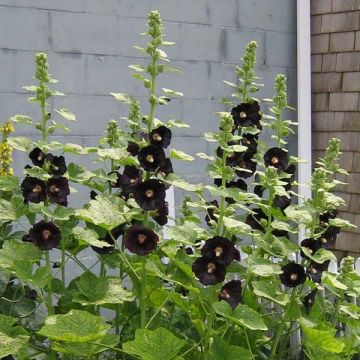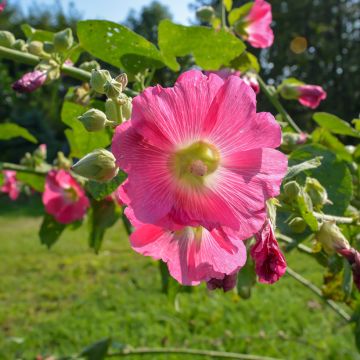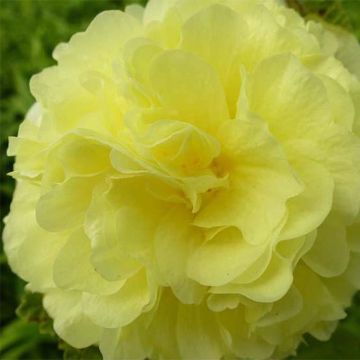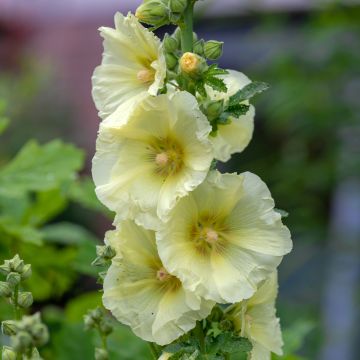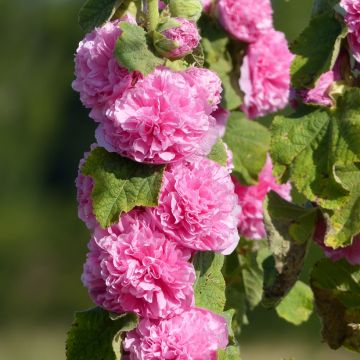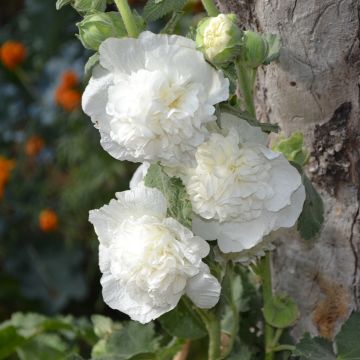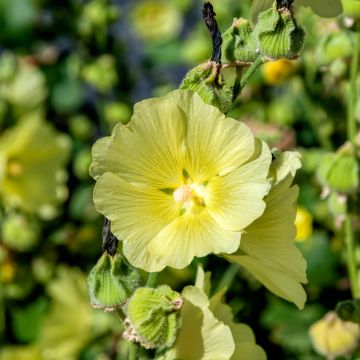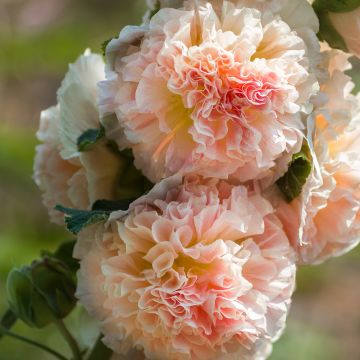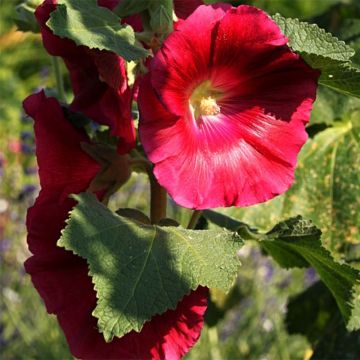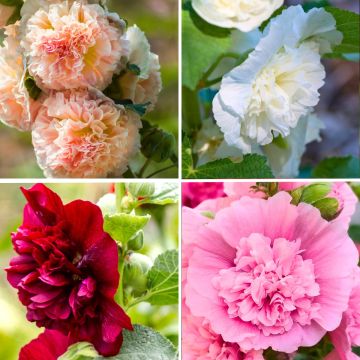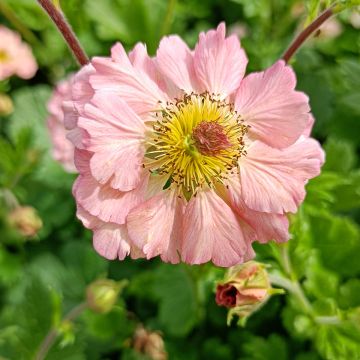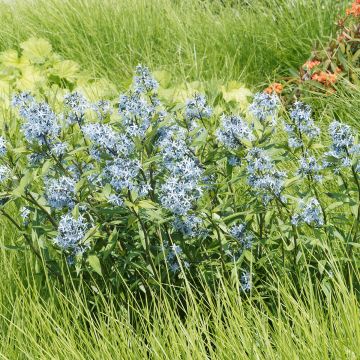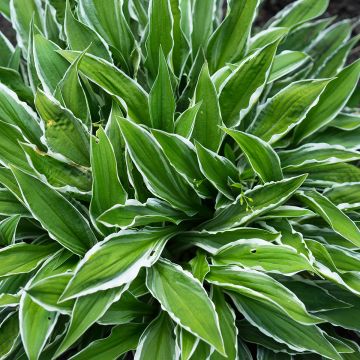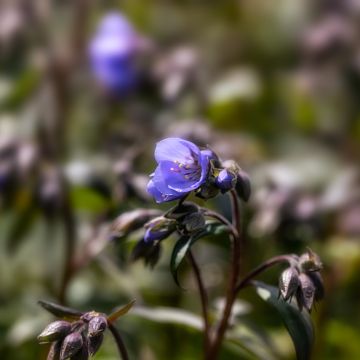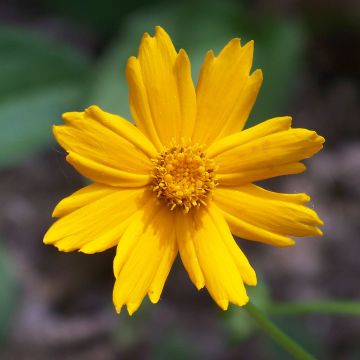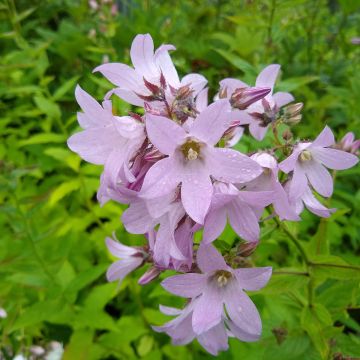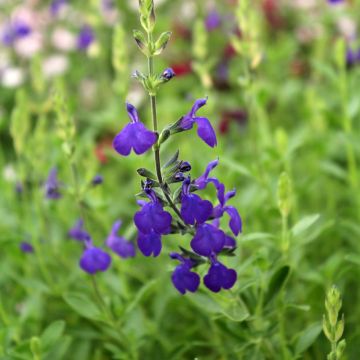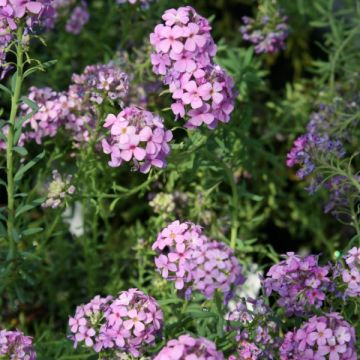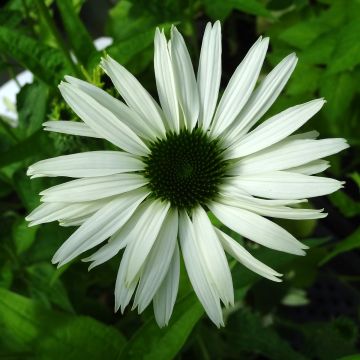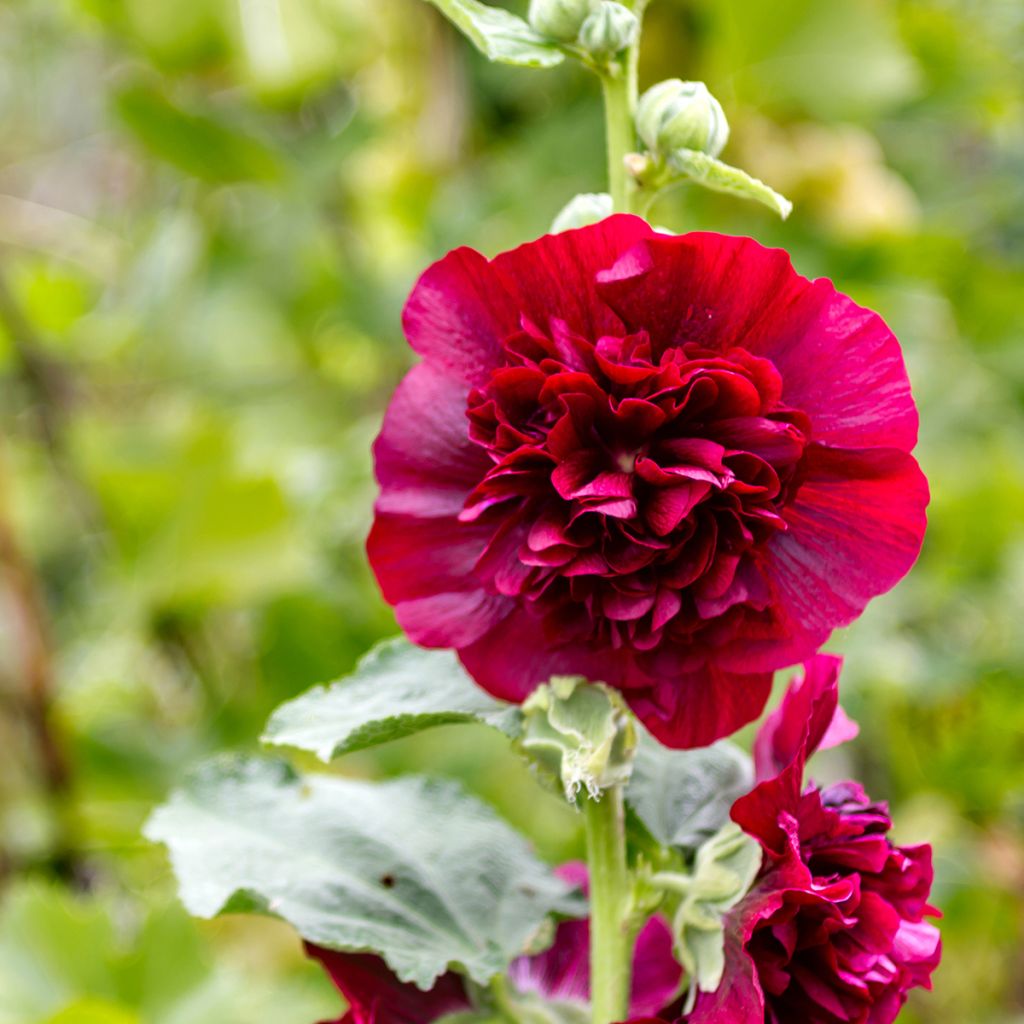

Alcea rosea Chatters Red - Hollyhock
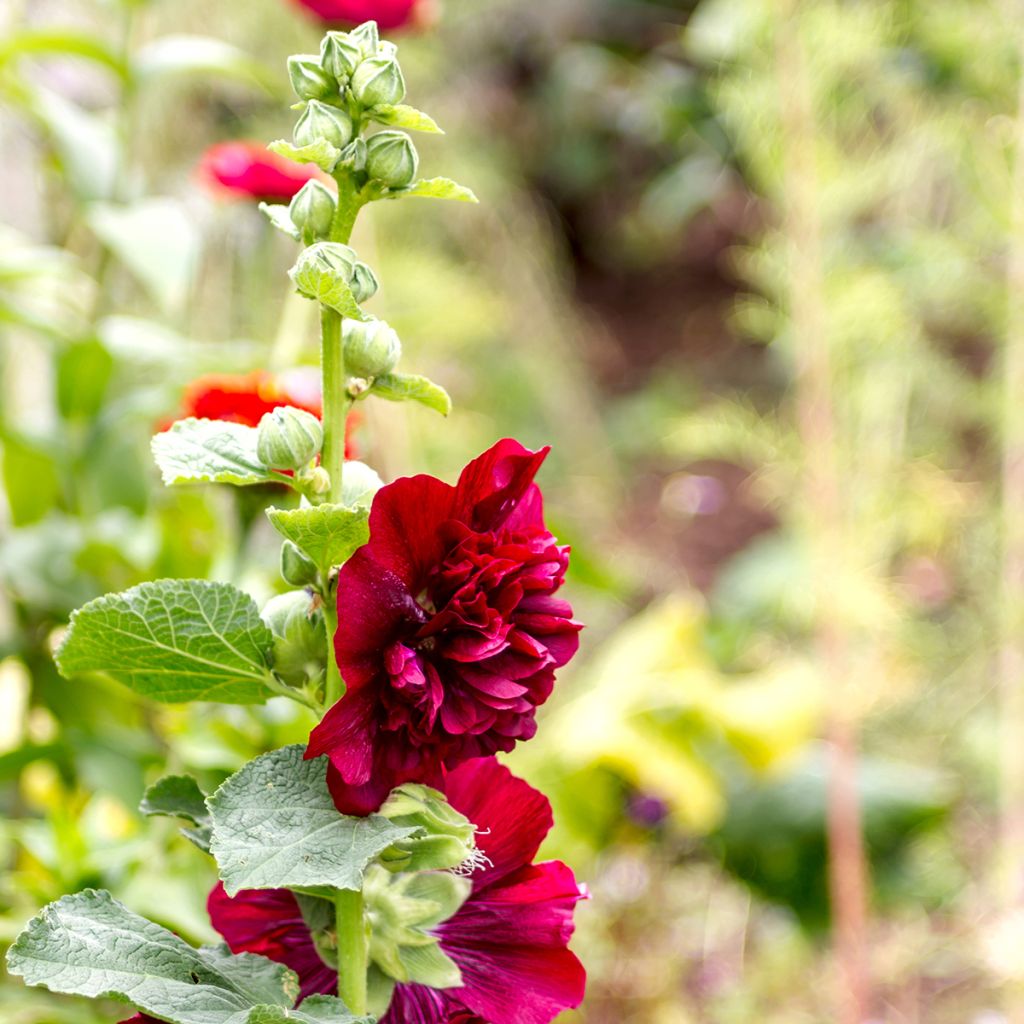

Alcea rosea Chatters Red - Hollyhock
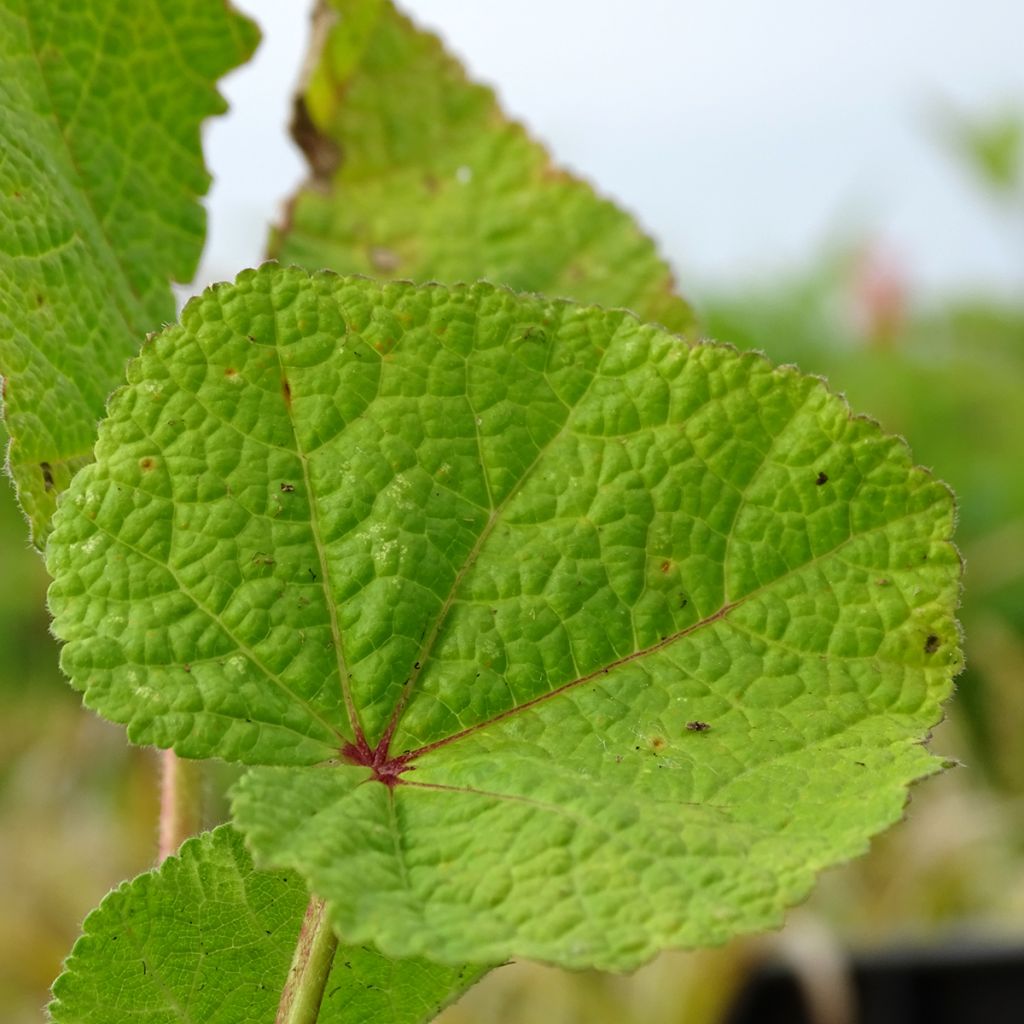

Alcea rosea Chatters Red - Hollyhock
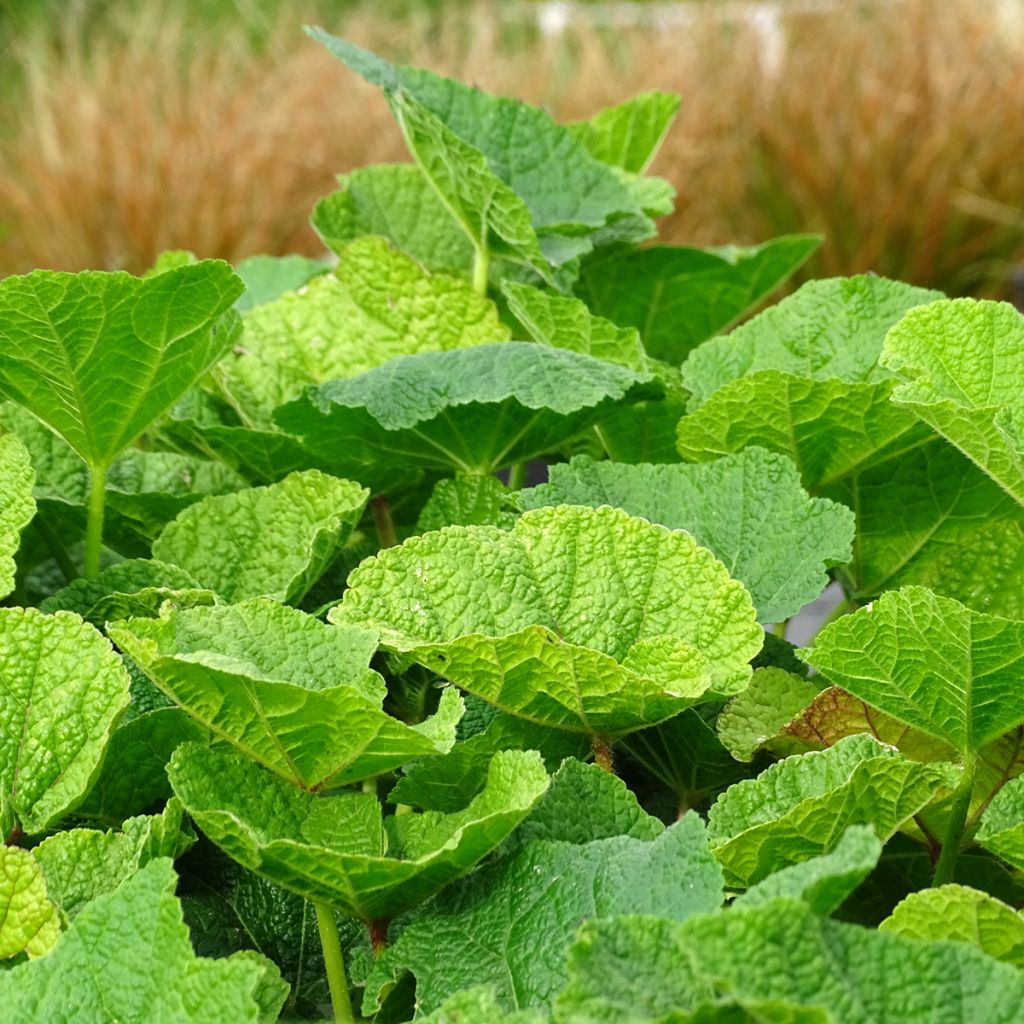

Alcea rosea Chatters Red - Hollyhock
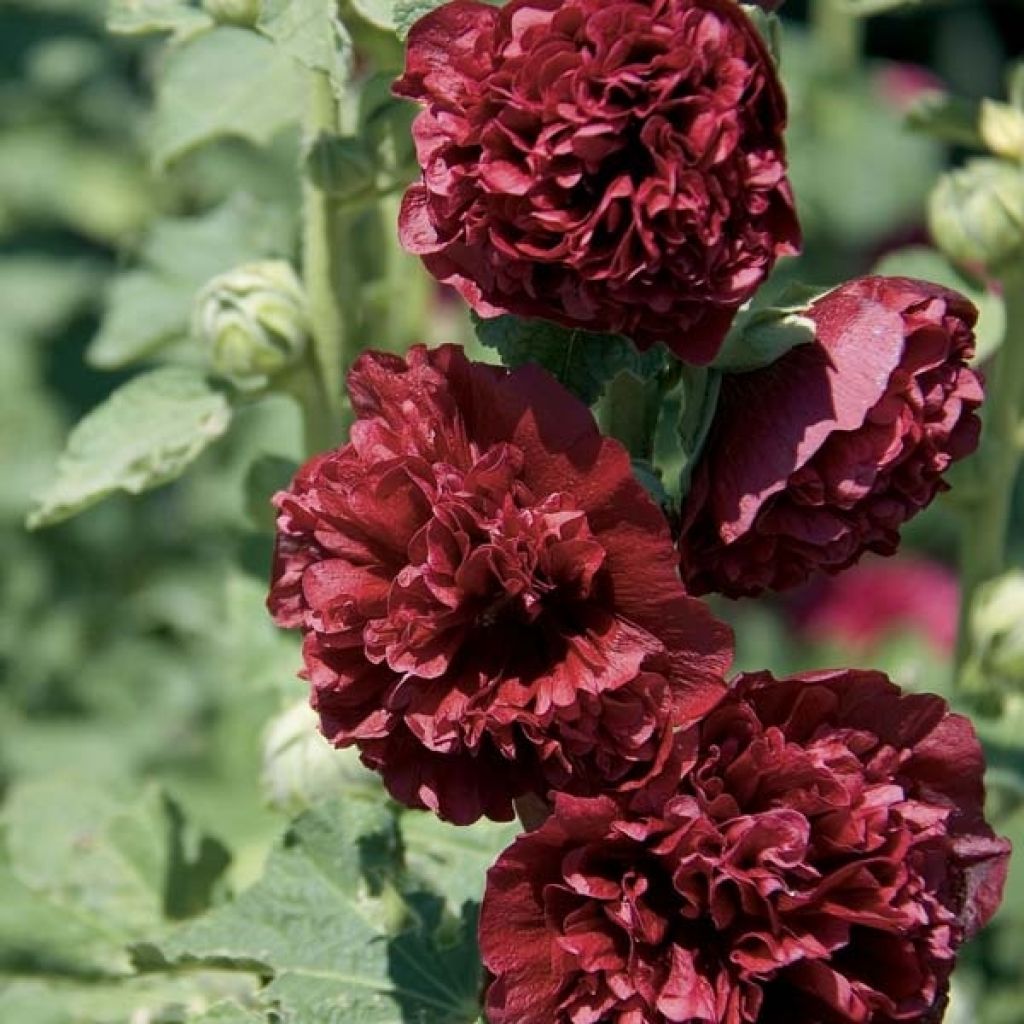

Alcea rosea Chatters Red - Hollyhock
Alcea rosea Chatters Red - Hollyhock
Alcea rosea Chatter's Red
Hollyhock
This item cannot be shipped to the selected country
Delivery charge from €5.90
More information
Schedule delivery date,
and select date in basket
This plant carries a 12 months recovery warranty
More information
We guarantee the quality of our plants for a full growing cycle, and will replace at our expense any plant that fails to recover under normal climatic and planting conditions.
From €5.90 for pickup delivery and €6.90 for home delivery
Express home delivery from €8.90.
Does this plant fit my garden?
Set up your Plantfit profile →
Description
The Alcea rosea Chatter's Red Double is the first variety of hollyhock that offers double red flowers. They are a very rich garnet red, carried majestically by tall floral spikes that are noticeable from far away in the garden. This perennial plant, frequently grown as a biennial, is emblematic of English cottage gardens and is wonderful at the back of borders or for covering the walls of an enclosed garden. It tolerates poor and rocky soils, withstands drought, and prefers warm and sheltered locations.
The hollyhock is also known by its Latin name Althaea rosea, and its vernacular names adopt all the accents of our regions: it is called Passe-rose, Rose à bâton, Rose papale, or primerose. Belonging to the mallow family, it is native to Asia Minor and often naturalized in slightly wild gardens, fallow land, and mounds of earth.
The Chater's Double Red hollyhock is a variety with fully double flowers derived from this wild plant. It is an upright plant, usually unbranched, that can reach a height of 2 to 2.5 meters (7 to 8 feet). It first develops a rosette of rounded leaves with 5 or 7 lobes, from which emerges a robust, slightly leafy floral stem in the second year, with very rapid growth. These spike-like inflorescences are covered with large buds that open, in a staggered manner, from June-July to August-September, and from bottom to top, into large ephemeral flowers measuring 8 to 10 cm (3 to 4in) in diameter, with a delicate crepe-like texture that allows light to pass through. They display a dark red hue, and their undulations reveal shades of brown, pink, or purple. Throughout this period, they will attract bees and butterflies to your garden. The flowering gives way to numerous fruits filled with seeds that self-sow spontaneously in the most unexpected areas, which it chooses itself: at the base of walls, in poor and rocky soils, crevices in walls, etc.
Common in abandoned gardens or fallow land in the countryside, the hollyhock is often cultivated at the back of borders or against a wall that protects it from strong winds. The garnet pompoms of this variety can be combined with pastel shades (white, candy pink) or warmer tones (soft yellow, orange, salmon), in both single and double forms. Hollyhocks pair well with yarrow, bugloss, and agastache, against a wall or leaning against a conifer hedge. This plant is said to be tolerant of juglone, a substance secreted by walnut roots; you could try planting it at the base of this tree, provided there is enough light. The hollyhock is an edible plant, with the floral buds being consumable raw in salads and the young leaves raw or cooked.
The hollyhock is both ornamental and medicinal. Its seeds produce an oil with drying properties. Rich in mucilage, it has soothing, emollient, expectorant, laxative, and appetizing properties, although milder than those of its cousin, Marshmallow (Althea officinalis).
Report an error about the product description
Alcea rosea Chatters Red - Hollyhock in pictures
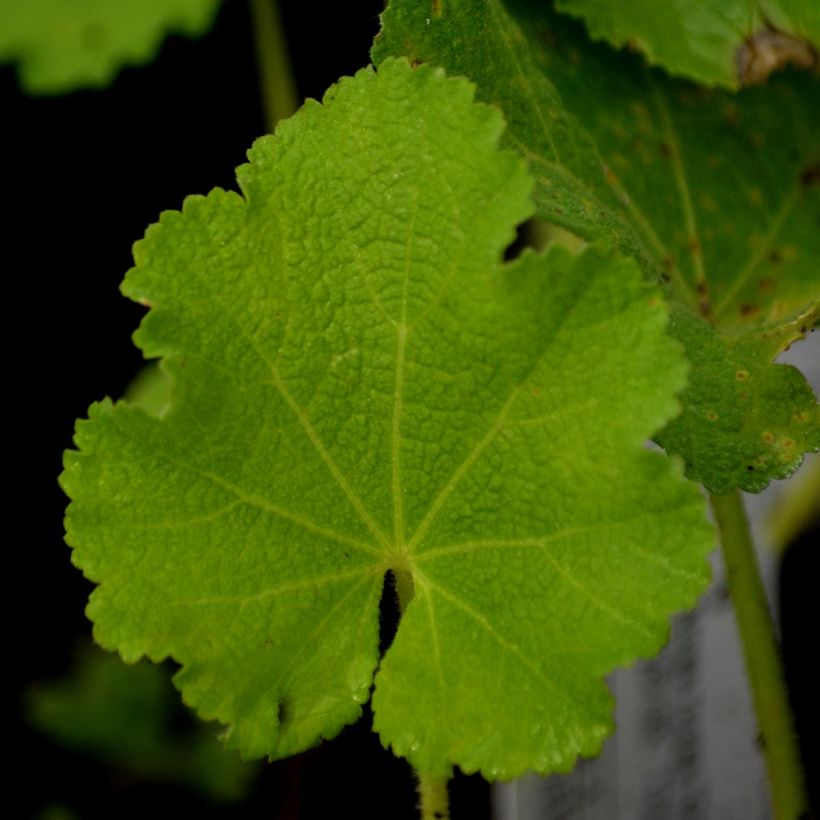

Flowering
Foliage
Plant habit
Botanical data
Alcea
rosea
Chatter's Red
Malvaceae
Hollyhock
Cultivar or hybrid
Other Alcea rosea - Hollyhocks
Planting and care
Trémière roses appreciate warm situations, sheltered from strong winds, sunlight, and can tolerate ordinary soil, even clay, limestone, poor or stony soil. Sometimes it is necessary to stake them. These plants with taproots do not appreciate transplanting when they are too developed. Care must be taken not to break this taproot during handling. The rosea species is resistant to drought and very hardy, but it is susceptible to slugs and particularly sensitive to rust in case of a rainy summer, or as it ages. Excess moisture should be avoided and treated preventively with a fungicide.
In October, remove the faded flower stalks, new foliage will appear.
Planting period
Intended location
Care
-
, onOrder confirmed
Reply from on Promesse de fleurs
Summer flowering perennials
Haven't found what you were looking for?
Hardiness is the lowest winter temperature a plant can endure without suffering serious damage or even dying. However, hardiness is affected by location (a sheltered area, such as a patio), protection (winter cover) and soil type (hardiness is improved by well-drained soil).

Photo Sharing Terms & Conditions
In order to encourage gardeners to interact and share their experiences, Promesse de fleurs offers various media enabling content to be uploaded onto its Site - in particular via the ‘Photo sharing’ module.
The User agrees to refrain from:
- Posting any content that is illegal, prejudicial, insulting, racist, inciteful to hatred, revisionist, contrary to public decency, that infringes on privacy or on the privacy rights of third parties, in particular the publicity rights of persons and goods, intellectual property rights, or the right to privacy.
- Submitting content on behalf of a third party;
- Impersonate the identity of a third party and/or publish any personal information about a third party;
In general, the User undertakes to refrain from any unethical behaviour.
All Content (in particular text, comments, files, images, photos, videos, creative works, etc.), which may be subject to property or intellectual property rights, image or other private rights, shall remain the property of the User, subject to the limited rights granted by the terms of the licence granted by Promesse de fleurs as stated below. Users are at liberty to publish or not to publish such Content on the Site, notably via the ‘Photo Sharing’ facility, and accept that this Content shall be made public and freely accessible, notably on the Internet.
Users further acknowledge, undertake to have ,and guarantee that they hold all necessary rights and permissions to publish such material on the Site, in particular with regard to the legislation in force pertaining to any privacy, property, intellectual property, image, or contractual rights, or rights of any other nature. By publishing such Content on the Site, Users acknowledge accepting full liability as publishers of the Content within the meaning of the law, and grant Promesse de fleurs, free of charge, an inclusive, worldwide licence for the said Content for the entire duration of its publication, including all reproduction, representation, up/downloading, displaying, performing, transmission, and storage rights.
Users also grant permission for their name to be linked to the Content and accept that this link may not always be made available.
By engaging in posting material, Users consent to their Content becoming automatically accessible on the Internet, in particular on other sites and/or blogs and/or web pages of the Promesse de fleurs site, including in particular social pages and the Promesse de fleurs catalogue.
Users may secure the removal of entrusted content free of charge by issuing a simple request via our contact form.
The flowering period indicated on our website applies to countries and regions located in USDA zone 8 (France, the United Kingdom, Ireland, the Netherlands, etc.)
It will vary according to where you live:
- In zones 9 to 10 (Italy, Spain, Greece, etc.), flowering will occur about 2 to 4 weeks earlier.
- In zones 6 to 7 (Germany, Poland, Slovenia, and lower mountainous regions), flowering will be delayed by 2 to 3 weeks.
- In zone 5 (Central Europe, Scandinavia), blooming will be delayed by 3 to 5 weeks.
In temperate climates, pruning of spring-flowering shrubs (forsythia, spireas, etc.) should be done just after flowering.
Pruning of summer-flowering shrubs (Indian Lilac, Perovskia, etc.) can be done in winter or spring.
In cold regions as well as with frost-sensitive plants, avoid pruning too early when severe frosts may still occur.
The planting period indicated on our website applies to countries and regions located in USDA zone 8 (France, United Kingdom, Ireland, Netherlands).
It will vary according to where you live:
- In Mediterranean zones (Marseille, Madrid, Milan, etc.), autumn and winter are the best planting periods.
- In continental zones (Strasbourg, Munich, Vienna, etc.), delay planting by 2 to 3 weeks in spring and bring it forward by 2 to 4 weeks in autumn.
- In mountainous regions (the Alps, Pyrenees, Carpathians, etc.), it is best to plant in late spring (May-June) or late summer (August-September).
The harvesting period indicated on our website applies to countries and regions in USDA zone 8 (France, England, Ireland, the Netherlands).
In colder areas (Scandinavia, Poland, Austria...) fruit and vegetable harvests are likely to be delayed by 3-4 weeks.
In warmer areas (Italy, Spain, Greece, etc.), harvesting will probably take place earlier, depending on weather conditions.
The sowing periods indicated on our website apply to countries and regions within USDA Zone 8 (France, UK, Ireland, Netherlands).
In colder areas (Scandinavia, Poland, Austria...), delay any outdoor sowing by 3-4 weeks, or sow under glass.
In warmer climes (Italy, Spain, Greece, etc.), bring outdoor sowing forward by a few weeks.

































